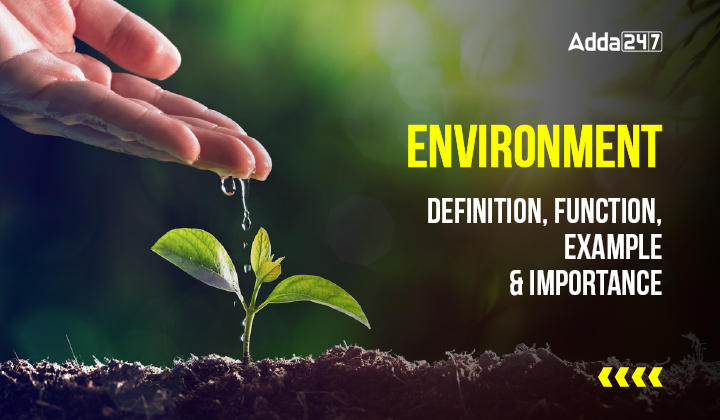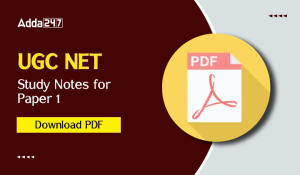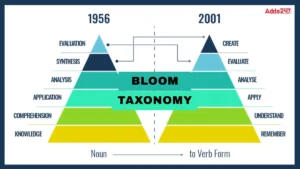Table of Contents
Environment can be summed up as the effects of all the living and nonliving things that have an impact on human life. Non-living or abiotic elements include water, land, sunshine, rocks, and air, whereas all live or biotic elements are animals, plants, forests, fisheries, and birds.
Environment – Definition
An environment is everything that surrounds us, including both living and nonliving objects like water, soil, plants, and animals that can adapt to their environment. The gift of nature is what sustains life on Earth.
The environment is crucial to the continued existence of life on earth. The French term “Environ,” which means “surrounding,” is the source of the English word “environment.” A foundation of the biosphere, which governs the wellbeing of the entire planet earth, an environment is defined as all living and non-living entities existing in the ecosystem.
Environment – Function
There are several functions of the environment which contribute to its appropriate functioning and ensuring that it operates to the best of its ability.
(1) Supplies the necessary materials
- For production, the environment provides resources.
- Both renewable and non-renewable resources are included.
- Examples include dirt, land, and wood for furniture.
(2) Sustainability of Life
- The sun, soil, water, and air are all components of the environment that are necessary for human life.
- It provides genetic variation and supports life.
(3) Consumes waste
- Waste is produced during the production and consumption processes.
- Most often, this takes the shape of trash
- The environment aids in the removal of trash.
(4) It improves quality of life
- The quality of life is improved by the surroundings.
- People appreciate the beauty of nature, which includes deserts, mountains, and rivers.
- These improve the standard of living.
Environment – Category
Natural examples of the environment include things like rivers, mountains, forests, and beaches. Soil, flora, and rocks are examples of features that have grown naturally in various environments. This category also includes naturally occurring eco-systems, which can be further divided into terrestrial and aquatic types. These examples of our environment are classified as resources. They are categorized under renewable and non-renewable resources.
- Renewable Resources – The resources which never deplete or exhaust even after continuous usage. Eg: Water, land
- Non-renewable Resources – The resources which begin to deplete and exhaust after usage for a continual period of time. Eg: Coal, petroleum
What is the Importance of an Environment?
The environment is crucial to both healthy living and the continuation of life on Earth. Different living species call Earth their home, and we all rely on it for things like food, air, and water. Therefore, it is crucial for each person to preserve and safeguard our ecosystem. The significance of environment on mankind has been enumerated below:
- There are environmental resources accessible for use in the creation of goods and services, including both renewable and nonrenewable resources.
- Sunlight, water, air, and soil are all components of the environment and are all necessary for human survival. Through the preservation of genetic diversity and biodiversity, it assures the continuation of life.
- The environment helps in the removal of waste from production and consumption processes, which is generally in the form of rubbish. Only because the environment is still present are humans able to appreciate the beauty of mountains, lakes, rivers, deserts, and a variety of other breathtaking natural features.
Why must our Environment be protected?
Our surroundings provide a home for our ecosystem and aids in its development. Unless we protect our environment, animals, crops, and ultimately ourselves, are at risk.
- Because forests and the trees that provide us with necessities for living, such as oxygen to breathe and materials for building, timber, oils, and a variety of other products, would become extinct if our environment was not conserved.
- The earth’s temperature is rising every day, as we can see. This is because, rather than protecting the environment, we abuse it. Carbon dioxide in the atmosphere is largely produced by humans, and this has a big impact on climate change.
- The economy benefits from the environment as well. A healthy environment promotes more nature-based tourism.
- If we looked after and cared for our environment, the number of cases of asthma and bronchitis would decline.
Download Environment Definition, Function, Example & Importance Study Notes PDF



 UP TGT Sanskrit Syllabus and Exam Patter...
UP TGT Sanskrit Syllabus and Exam Patter...
 UGC NET Study Notes for Paper 1, Downloa...
UGC NET Study Notes for Paper 1, Downloa...
 Bloom Taxonomy, Purpose, Domains, Exampl...
Bloom Taxonomy, Purpose, Domains, Exampl...




